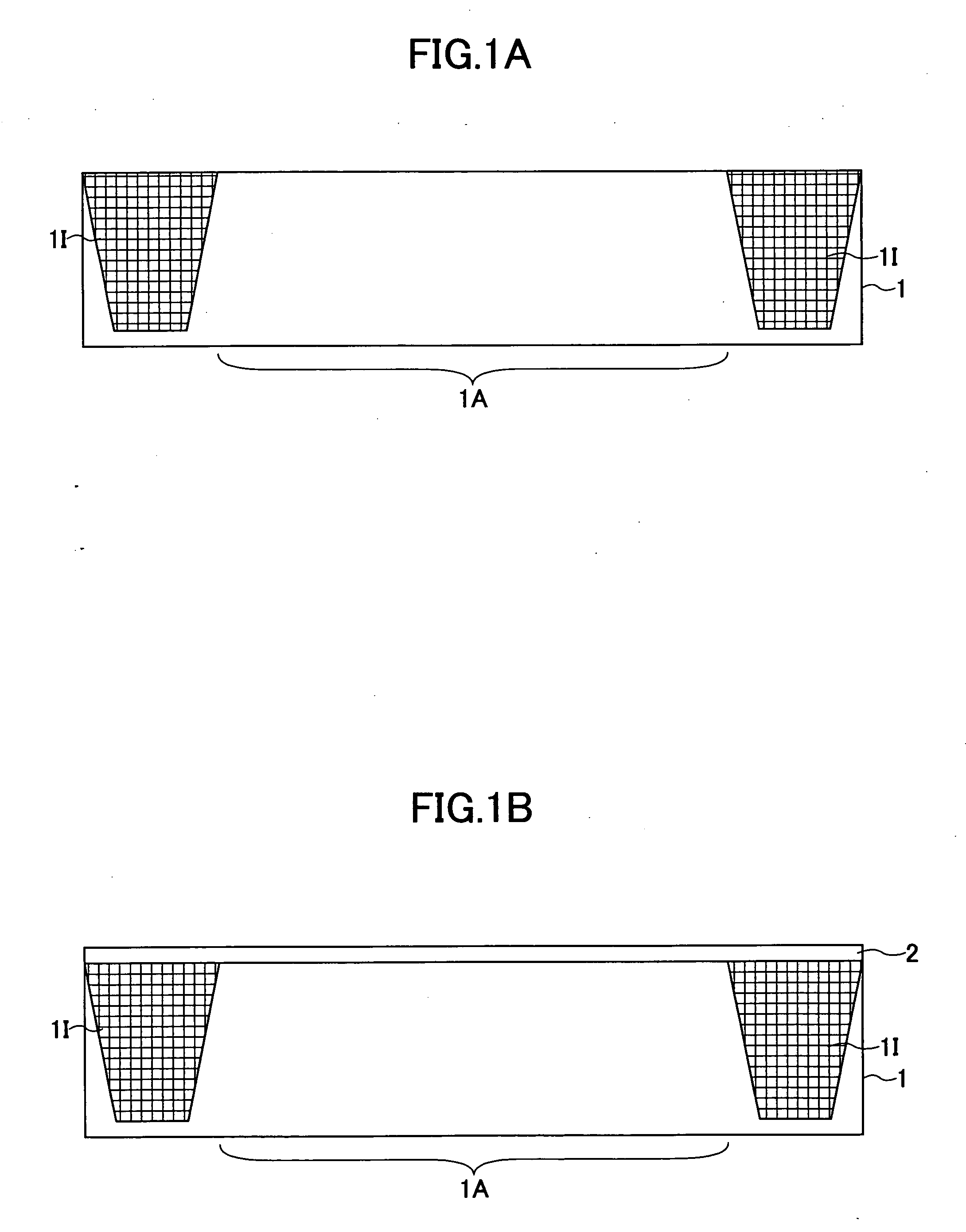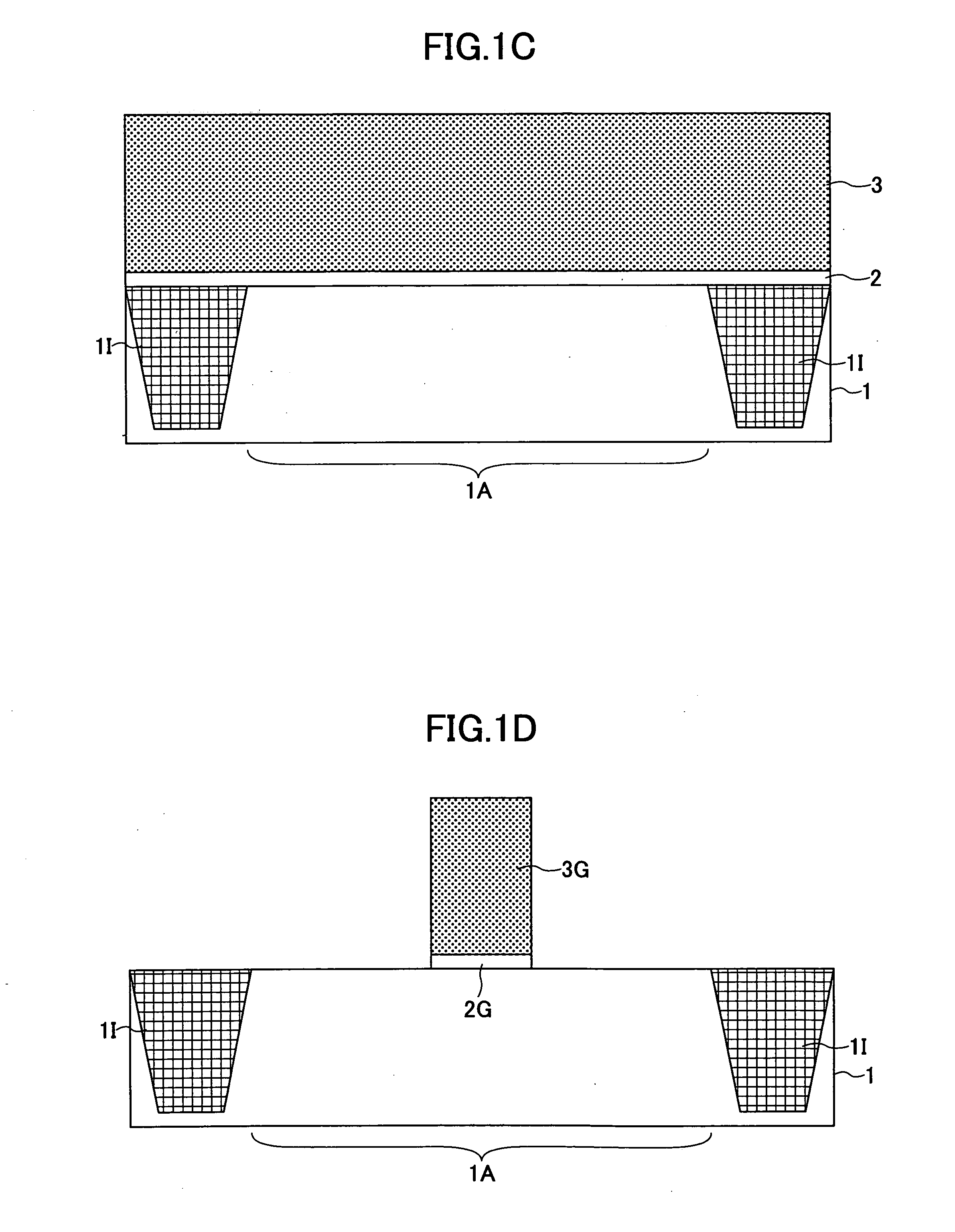Fabrication process of a semiconductor device
a technology of semiconductor devices and fabrication processes, which is applied in the direction of semiconductor devices, electrical devices, transistors, etc., can solve the problems of reducing the gate length and other problems, and achieve the effects of reducing the depth, increasing the leakage current, and low sheet resistan
- Summary
- Abstract
- Description
- Claims
- Application Information
AI Technical Summary
Benefits of technology
Problems solved by technology
Method used
Image
Examples
first embodiment
[0047]FIGS. 1A-1L are diagrams showing the fabrication process of a semiconductor device 10 according to a first embodiment of the present invention, while FIG. 2 shows the flowchart corresponding to the steps of FIGS. 1H-1L.
[0048] Referring to FIG. 1A, the semiconductor device 10 is an n-channel MOS transistor formed on a silicon substrate 1, wherein the silicon substrate is formed with a device region 1A by a device isolation region 1I of STI (shallow trench isolation) structure. The device region 1A may be formed with a p-type well (not shown), for example.
[0049] Next, in the step of FIG. 1B, an SiON film 2 is formed on the silicon substrate 1 with a thickness of 1-2 nm, and a polysilicon film 3 is formed on the SiON film 2 in the step of FIG. 1C.
[0050] Next, in the step of FIG. 1D, the polysilicon film and the SiON film 2 underneath thereof are subjected to a patterning process, and as a result, there are formed a polysilicon gate electrode 3G and an SiON gate insulation film...
second embodiment
[0075]FIGS. 8A-8E are diagrams showing the fabrication process of a semiconductor device according to a second embodiment of the present invention, wherein those parts corresponding to the parts described previously are designated by the same reference numerals and the description thereof will be omitted.
[0076] Referring to FIG. 8A, FIG. 8A represents the process step that follows the step of FIG. 1G and, after cleaning silicon surface by DHF or dry chemical cleaning, the metallic nickel film 5 is formed on the structure of FIG. 1G with the thickness of about 10 nm by a sputtering process, for example.
[0077] With the present embodiment, no protective film 5N is formed on the surface of the metallic nickel film 5, and the native oxide film of Ni formed on the surface of the metallic nickel film 5 is reduced to metallic Ni by annealing the structure of FIG. 8A in the hydrogen gas ambient in the subsequent process of FIG. 8B.
[0078] Next, in the step of FIG. 8C, the structure of the ...
third embodiment
[0083] Next, the fabrication process of a CMOS device according to a third embodiment of the present invention will be described with reference to FIGS. 9A-9F.
[0084] Referring to FIG. 9A, there are defined a device region 11A and a device region 11B respectively of an n-channel MOS transistor and a p-channel MOS transistor on a silicon substrate 11 by a device isolation structure 11I of STI type, wherein the device region 11A is doped to p-type and forms a p-type well. Further, the device region 11B is doped to n-type and forms an n-type well.
[0085] Further, in the device region 11A, ion implantation is conducted in the vicinity of the surface of the silicon substrate 11, although not illustrated, by a p-type impurity element for the purpose of threshold adjustment of the n-channel MOS transistor. Likewise, ion implantation is conducted in the vicinity of the surface of the silicon substrate 11 in the device region 11B, although not illustrated, by an n-type impurity element for t...
PUM
| Property | Measurement | Unit |
|---|---|---|
| temperature | aaaaa | aaaaa |
| temperature | aaaaa | aaaaa |
| gate length | aaaaa | aaaaa |
Abstract
Description
Claims
Application Information
 Login to View More
Login to View More - R&D
- Intellectual Property
- Life Sciences
- Materials
- Tech Scout
- Unparalleled Data Quality
- Higher Quality Content
- 60% Fewer Hallucinations
Browse by: Latest US Patents, China's latest patents, Technical Efficacy Thesaurus, Application Domain, Technology Topic, Popular Technical Reports.
© 2025 PatSnap. All rights reserved.Legal|Privacy policy|Modern Slavery Act Transparency Statement|Sitemap|About US| Contact US: help@patsnap.com



